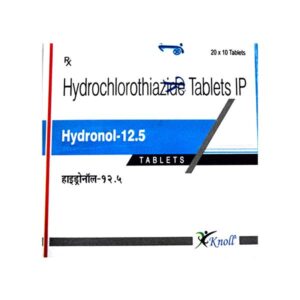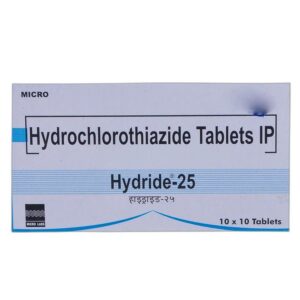HYDROCHLOROTHIAZIDE
HYDROCHLOROTHIAZIDE: Hydrochlorothiazide is a medication that belongs to the thiazide diuretic class. It is commonly prescribed to treat high blood pressure (hypertension) and edema (fluid retention) associated with certain medical conditions such as congestive heart failure, liver cirrhosis, and kidney disorders.
The main mechanism of action of hydrochlorothiazide is its ability to increase the excretion of water and electrolytes, particularly sodium and chloride ions, by inhibiting the reabsorption of these substances in the kidneys. This increases urine production and helps to decrease fluid volume in the body, thereby reducing blood pressure and relieving edema.
The usual starting dose of hydrochlorothiazide for hypertension is 12.5 to 25 mg taken orally once daily. Depending on individual response and blood pressure control, the dose can be increased up to a maximum of 50 mg per day. For edema, the typical starting dose is 25 to 100 mg taken once or twice daily. It is important to follow the dosage instructions provided by the healthcare provider.
Some common side effects of hydrochlorothiazide include dizziness, lightheadedness, headache, blurred vision, increased urination, muscle cramps, gastrointestinal disturbances (such as nausea, vomiting, and diarrhea), and low blood potassium levels (hypokalemia). In rare cases, it may cause more serious side effects such as allergic reactions, electrolyte imbalances, pancreatitis, and kidney problems. If any severe or persistent side effects occur, it is important to seek medical attention promptly.
It is essential to note that hydrochlorothiazide should be used under the guidance of a healthcare professional. They will determine the appropriate dose based on the individual’s medical condition, response to treatment, and overall health. It is also important to inform the healthcare provider about any other medications being taken to prevent potential drug interactions or contraindications.


